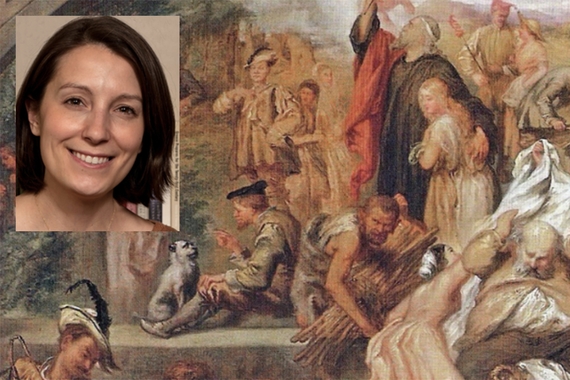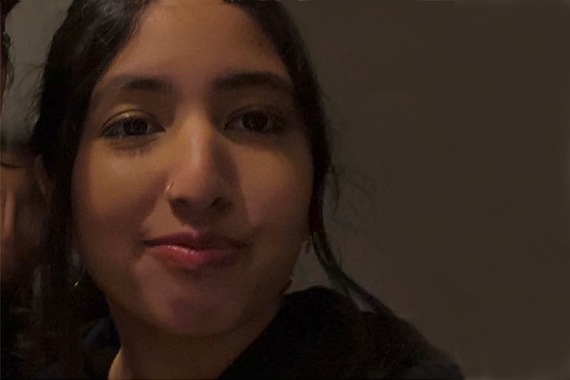The Academic Career: Combining Public Humanities with Traditional Research
Trenton B. Olsen (PhD 2014) is the new president of the Stevenson Society of America (est. 1915), which owns and operates the Robert Louis Stevenson Cottage Museum in Saranac Lake, New York. “I never anticipated this role,” says Olsen. “It’s been a crash course in museum and nonprofit management, but I’m delighted and honored to take it on. As Stevenson wrote, ‘the most beautiful adventures are not those we go to seek.’”
An associate professor of English at Brigham Young University-Idaho, Olsen is the author of Wordsworth and Evolution in Victorian Literature: Entangled Influence (Routledge, 2019) and the editor of The Complete Personal Essays of Robert Louis Stevenson, which was named a Top 75 Title by the American Library Association’s Choice and reviewed by Phillip Lopate in the New York Review of Books. “Working to help Stevenson’s essays and the cottage museum get the attention they deserve is very exciting,” says Olsen. “More than documenting literary history, it gives me a chance to actively shape it.”
He graciously answered our questions via email.
Please describe your career path.
Given my interest in nineteenth-century British literary influence, I couldn’t have found a better advisor than Professor Andy Elfenbein anywhere in the world. Professors Brian Goldberg and Gordon Hirsch, who introduced me to the study of Stevenson in my first semester, were also wonderfully helpful. I was very fortunate to land a tenure-track faculty position in 2014 at Brigham Young University-Idaho: a teaching-focused, undergraduate institution where I teach at least ten classes a year.
Since developing my dissertation into a monograph in 2018, my research has focused on Stevenson. When I first came across Stevenson’s essays in graduate school, I found they were rich sources for research but also delightful reading: I was struck by their playfulness and profound insight, stylistic vitality and emotional force. I was surprised that no complete edition of the essays had been published and more surprised to learn that many of Stevenson’s Victorian contemporaries thought that he would be remembered primarily as an essayist. My doctoral training in reception history helped me understand how the perception of an author changes over time, and I thought that a rereading and reappreciation of Stevenson’s essays was overdue. I edited The Complete Personal Essays of Robert Louis Stevenson—the first complete, single-volume edition ever printed—which was originally published by Routledge in 2021 and just released in an expanded and much more affordable second edition. The essays had to be gathered, painstakingly restored to Stevenson’s intended version, annotated, and introduced. It was more than I anticipated but a labor of love well worth doing. Involving undergraduate research assistants in meaningful ways was one of the joys of the project.
What led to your current role as president of the Stevenson Society of America and what does it entail?
First, some historical background: Stevenson lived in Saranac Lake in the Adirondack mountains of New York in 1887–1888 before traveling to the Pacific and ultimately relocating to Samoa. He suffered from pulmonary illness and came to Saranac Lake for its tuberculosis sanatorium. While there, he wrote some of his best essays and the novel The Master of Ballantrae. The Stevenson Society of America was established in 1915 to preserve the cottage as a museum, making it the world’s first site dedicated to Stevenson. Charter members included many of Stevenson’s friends and family members, Associated Press founder Charles Palmer, and Mount Rushmore sculptor Gutzon Borglum, who unveiled his bronze relief sculpture of Stevenson, now in the museum’s permanent collection, at the Society’s founding.
In the summer of 2023, I visited Saranac Lake for the first time. I found both an extraordinary collection of Stevenson artifacts and a museum in urgent need. Kept afloat by a family of volunteer caretakers for three generations, the museum now lacked funding for essential building repairs and ongoing maintenance. What’s more, there was no plan for what would happen once the resident curator of nearly 50 years could no longer fill his role. I got involved to help where I could and was asked to serve as president to revitalize the museum, build its profile and budget, and secure its future. I’ve been working on this over the past year and spent several weeks in New York this summer meeting with partner institutions, developing a student internship program, recruiting volunteers, fundraising, and doing public events. We’re just getting started, but things are beginning to happen. We got our first grant from the federal Institute of Museum and Library Services (IMLS) and brought on a high-profile board member in Phillip Lopate, who came to the museum for the first time and recorded a promotional video for us.
What has been most fulfilling or energizing about your work?
My university has flexible professional development requirements, but I’ve found traditional research to be both intrinsically valuable and instrumental in my teaching. Supporting the research of my students and colleagues has been an especially rewarding part of academia: I started a student research and writing retreat, a departmental Honors Program, and the English Faculty Colloquium: a research workshop patterned after the Nineteenth Century Subfield at Minnesota.
Volunteering for the Stevenson museum, it’s been fun to shift my writing focus from researched arguments intended for other specialists to public humanities/nonfiction, which is more about storytelling. This has mostly been in speaking engagements, but I plan to start writing for public-facing outlets to bring more attention to the museum.
The cottage museum and Stevenson’s essays have been overlooked in related ways. The essays Stevenson wrote in Saranac Lake were published in Scribner’s Magazine and widely considered some of his best work. That Stevenson wrote essays like “The Lantern-Bearers” at the cottage had everything to do with the decision to preserve it.



